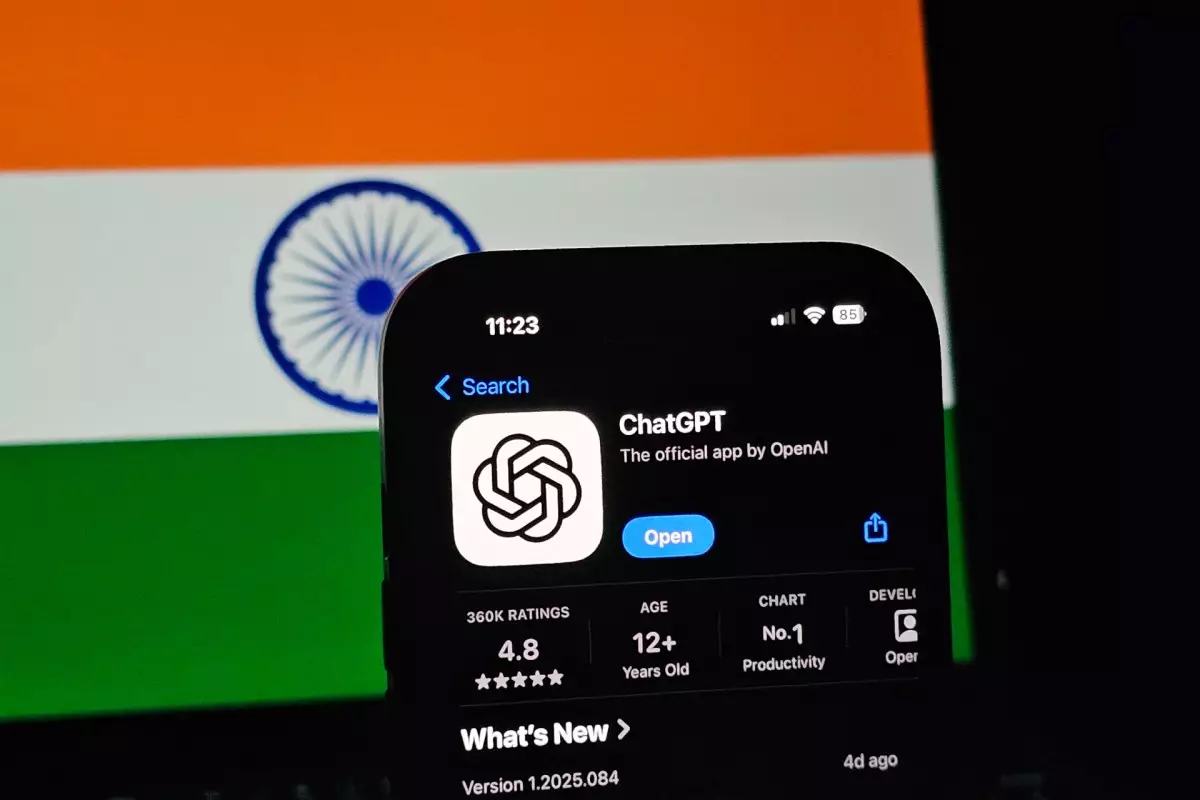India offers a mesmerizing marketplace for tech giants, especially U.S. companies eager to leverage its blossoming digital landscape. With an impressive user base exceeding 950 million internet subscribers, the country stands as a potential goldmine for growth. However, the reality is much more nuanced. OpenAI’s ChatGPT, while hailed as one of the most innovative AI products, faces substantial hurdles in converting user engagement into tangible revenue in India. Despite being labeled as a fast-growing market for ChatGPT, figures disclose a different story that underscores the complexities of the Indian digital ecosystem.
Disparity in Revenue: A Closer Look
Recent analytics from SensorTower paint a striking picture of the contrasts between revenue generated in India versus the United States. Users in India have reportedly spent $8 million on ChatGPT subscriptions through in-app purchases since the start of 2023. In contrast, U.S. users have forked out an astounding $330 million during the same period. This staggering disparity raises questions about the effectiveness of OpenAI’s monetization strategy in a diverse market like India.
A significant factor contributing to this imbalance is pricing. OpenAI’s introductory plan in India costs $20 per month, translating to over ₹1,700—a steep price for a digital subscription in a country where many large segments of the population are price-sensitive. The lack of localized pricing options likely alienates a considerable portion of potential users who might find such costs prohibitive.
Perceptions and Pricing Sensitivity
Understanding Indian consumers is key to any successful venture in the country, particularly in the tech space. Indian customers have shown a distinct preference for affordable pricing models that cater to the average digital user. By aligning its pricing strategy with local economic realities, OpenAI could significantly enhance its acceptance in the market. The lesson here is clear: global tech firms cannot adopt a one-size-fits-all approach in emerging economies. Instead, they must embrace sensitivity to local pricing norms, cultural elements, and consumer behaviors to establish a foothold.
Strategic Partnerships: A Path Forward
To stem the tide of slow revenue growth, OpenAI appears to understand the importance of strategic alliances. Reports indicate that the company is looking to forge a partnership with Reliance Jio, one of India’s largest telecom providers. This collaboration could be a game changer, enabling OpenAI to reach a wider audience more effectively. By embedding ChatGPT within Jio’s existing services and customer base, OpenAI stands to benefit from increased visibility and potentially higher user conversion rates.
Furthermore, the organic growth of the application indicates that there’s an appetite for AI technology in India. Data reveals that over 20% of the Android app downloads of ChatGPT this year have originated from the Indian market alone. These statistics suggest that while monetization may be sluggish, user enthusiasm for ChatGPT is far from lacking.
The Road Ahead: Balancing Innovation and Localization
OpenAI’s ambition to expand into a multi-billion-user platform aligns seamlessly with the opportunities in India. However, to navigate the complexities of this vibrant market, the company must consider localization as a driving force for its growth strategy. Embracing local nuances, from pricing to partnerships, is not merely an option; it’s a necessity for sustained success. The stakes are high, and the path is fraught with challenges, but with diligence and a keen understanding of the Indian market, OpenAI has the potential to unlock unprecedented growth.

